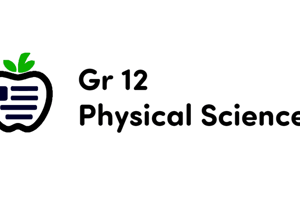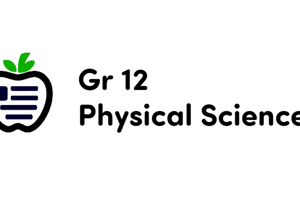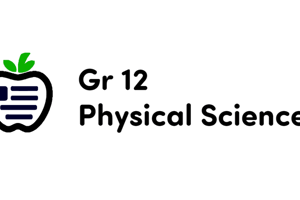Podcast
Questions and Answers
An object is dropped from a height where air resistance is negligible. Which of the following statements is most accurate regarding its acceleration?
An object is dropped from a height where air resistance is negligible. Which of the following statements is most accurate regarding its acceleration?
- Its acceleration is constant, but its exact value depends on the object's mass.
- Its acceleration is constant and equal to -9.8 m/s². (correct)
- Its acceleration increases as it falls due to increasing velocity.
- Its acceleration decreases as it falls due to decreasing gravitational force.
A physics student is conducting an experiment to determine the mass of an object using a spring scale. The scale reads 4.9 N. Assuming the experiment is conducted on Earth, what adjustments, if any, should the student make to determine the mass of the object?
A physics student is conducting an experiment to determine the mass of an object using a spring scale. The scale reads 4.9 N. Assuming the experiment is conducted on Earth, what adjustments, if any, should the student make to determine the mass of the object?
- Multiply the reading by 9.8 to find the mass.
- No adjustments are necessary; 4.9 N is the mass of the object.
- Subtract 9.8 from the reading to account for the difference between weight and mass.
- Divide the reading by 9.8 to find the mass. (correct)
An astronaut is tasked with measuring the weight of a rock sample both on the Moon and on Earth using a calibrated spring scale. Knowing that the gravitational acceleration on the Moon is approximately 1.67 m/s², how will the readings compare?
An astronaut is tasked with measuring the weight of a rock sample both on the Moon and on Earth using a calibrated spring scale. Knowing that the gravitational acceleration on the Moon is approximately 1.67 m/s², how will the readings compare?
- The weight will be the same on both the Moon and Earth since mass is constant.
- The weight on the Moon will be approximately 5.9 times less than on Earth. (correct)
- The weight on the Moon will be approximately 5.9 times greater than on Earth.
- The weight on the Moon will be slightly greater due to the lower air resistance.
A cargo plane is flying from Miami to London. It is carrying scientific equipment, including a highly sensitive scale and a 5 kg reference mass used for calibration. Considering the subtle variations in gravitational acceleration across the Earth's surface, what effect, if any, will the change in location have on the scale's reading of the reference mass?
A cargo plane is flying from Miami to London. It is carrying scientific equipment, including a highly sensitive scale and a 5 kg reference mass used for calibration. Considering the subtle variations in gravitational acceleration across the Earth's surface, what effect, if any, will the change in location have on the scale's reading of the reference mass?
Two objects have the same weight on Earth. Object A has a smaller mass than Object B. What can be concluded about the two objects?
Two objects have the same weight on Earth. Object A has a smaller mass than Object B. What can be concluded about the two objects?
Which of the following best describes the focus of dynamics in physics?
Which of the following best describes the focus of dynamics in physics?
What distinguishes an external force from an internal force acting on a system?
What distinguishes an external force from an internal force acting on a system?
Why is it important to establish a coordinate system when analyzing forces in physics problems?
Why is it important to establish a coordinate system when analyzing forces in physics problems?
When analyzing forces on a system, what does the 'net external force' represent?
When analyzing forces on a system, what does the 'net external force' represent?
A book is resting on a table. Which of the following statements is true regarding forces?
A book is resting on a table. Which of the following statements is true regarding forces?
How does kinematics differ from dynamics?
How does kinematics differ from dynamics?
In a scenario involving a ball rolling down a sloping plane, which coordinate system would be most convenient for analyzing the forces?
In a scenario involving a ball rolling down a sloping plane, which coordinate system would be most convenient for analyzing the forces?
A person pushes a box across a rough floor. Friction acts between the box and the floor. If 'the box' is defined as the system, and the person and floor are outside the system, then which of the following is true?
A person pushes a box across a rough floor. Friction acts between the box and the floor. If 'the box' is defined as the system, and the person and floor are outside the system, then which of the following is true?
A box is being pushed to the right with a force of 20 N, but it is moving at a constant velocity. What does this imply about the force of friction acting on the box?
A box is being pushed to the right with a force of 20 N, but it is moving at a constant velocity. What does this imply about the force of friction acting on the box?
In a free-body diagram, what is represented by the length of the arrows?
In a free-body diagram, what is represented by the length of the arrows?
Why are only external forces considered when drawing a free-body diagram?
Why are only external forces considered when drawing a free-body diagram?
Which of the following best describes the concept of friction as described by Newton's first law?
Which of the following best describes the concept of friction as described by Newton's first law?
An object is suspended from a rope. In the free-body diagram, what does the tension force represent?
An object is suspended from a rope. In the free-body diagram, what does the tension force represent?
What distinguishes static friction from kinetic friction?
What distinguishes static friction from kinetic friction?
According to the convention described, what does a horizontal force of -5 N indicate?
According to the convention described, what does a horizontal force of -5 N indicate?
A car is traveling at a constant velocity. According to Newton's first law, what can be said about the net external force acting on the car?
A car is traveling at a constant velocity. According to Newton's first law, what can be said about the net external force acting on the car?
In the context of forces, what is the significance of obtaining a negative result when calculating a vertical force?
In the context of forces, what is the significance of obtaining a negative result when calculating a vertical force?
Which of the following is an example of a force that acts without physical contact?
Which of the following is an example of a force that acts without physical contact?
What adjustments should be made knowing that positive direction tends upward?
What adjustments should be made knowing that positive direction tends upward?
A hockey puck is hit on an ice rink. Which of the following forces is primarily responsible for eventually slowing the puck down?
A hockey puck is hit on an ice rink. Which of the following forces is primarily responsible for eventually slowing the puck down?
Consider the scenario where a book is resting on a table. According to Newton's First Law, which statement is most accurate?
Consider the scenario where a book is resting on a table. According to Newton's First Law, which statement is most accurate?
A person is trying to push a heavy crate across a floor, but the crate doesn't move. What type of friction is primarily responsible for preventing the crate from moving?
A person is trying to push a heavy crate across a floor, but the crate doesn't move. What type of friction is primarily responsible for preventing the crate from moving?
How are free-body diagrams useful in studying forces and motion?
How are free-body diagrams useful in studying forces and motion?
According to Newton's second law, what happens to the acceleration of an object if the net force acting on it is doubled, while its mass remains constant?
According to Newton's second law, what happens to the acceleration of an object if the net force acting on it is doubled, while its mass remains constant?
If the net force on a cart is constant, how does its acceleration change as its mass is increased?
If the net force on a cart is constant, how does its acceleration change as its mass is increased?
Two objects have the same acceleration. Object A has twice the mass of Object B. How does the net force on Object A compare to the net force on Object B?
Two objects have the same acceleration. Object A has twice the mass of Object B. How does the net force on Object A compare to the net force on Object B?
A 2 kg object accelerates at 3 m/s. What is the net force acting on the object?
A 2 kg object accelerates at 3 m/s. What is the net force acting on the object?
An astronaut in deep space applies a constant force to a 100 kg satellite. After 5 seconds, the satellite has moved 25 meters. What is the magnitude of the applied force?
An astronaut in deep space applies a constant force to a 100 kg satellite. After 5 seconds, the satellite has moved 25 meters. What is the magnitude of the applied force?
A car accelerates from rest to 20 m/s in 5 seconds. If the net force acting on the car is 4000 N, what is the mass of the car?
A car accelerates from rest to 20 m/s in 5 seconds. If the net force acting on the car is 4000 N, what is the mass of the car?
What is the weight of a 50 kg object on Earth, where the acceleration due to gravity is approximately 9.8 m/s?
What is the weight of a 50 kg object on Earth, where the acceleration due to gravity is approximately 9.8 m/s?
What is the primary difference between mass and weight?
What is the primary difference between mass and weight?
A box is being pulled across a frictionless floor with a force of 10 N. If the box experiences an acceleration of 2 m/s, what would the acceleration be if the applied force was increased to 20 N?
A box is being pulled across a frictionless floor with a force of 10 N. If the box experiences an acceleration of 2 m/s, what would the acceleration be if the applied force was increased to 20 N?
A constant force is applied to two objects of different masses. Object A has a mass of $m$, and Object B has a mass of $3m$. How do their accelerations compare?
A constant force is applied to two objects of different masses. Object A has a mass of $m$, and Object B has a mass of $3m$. How do their accelerations compare?
A 2 kg block is pushed across a horizontal surface with a force of 6 N. If a frictional force of 2 N opposes the motion, what is the acceleration of the block?
A 2 kg block is pushed across a horizontal surface with a force of 6 N. If a frictional force of 2 N opposes the motion, what is the acceleration of the block?
A car is pulling a trailer with a force of $F$. According to Newton's Second Law, if the mass of the trailer doubles, what must happen to the force applied by the car to maintain the same acceleration?
A car is pulling a trailer with a force of $F$. According to Newton's Second Law, if the mass of the trailer doubles, what must happen to the force applied by the car to maintain the same acceleration?
An object is dropped from a tall building. Assuming air resistance is negligible, what is the magnitude of the net force acting on the object as it falls?
An object is dropped from a tall building. Assuming air resistance is negligible, what is the magnitude of the net force acting on the object as it falls?
A person pushes a box with a force of 50 N, and the box moves with a constant velocity. What is the magnitude of the frictional force acting on the box?
A person pushes a box with a force of 50 N, and the box moves with a constant velocity. What is the magnitude of the frictional force acting on the box?
A box is sliding across a floor. Which of the following statements accurately describes the force of friction acting on the box?
A box is sliding across a floor. Which of the following statements accurately describes the force of friction acting on the box?
Two forces act on an object: Force 1 is 10 N to the east, and Force 2 is 15 N to the west. If the object has a mass of 5 kg, what is its acceleration?
Two forces act on an object: Force 1 is 10 N to the east, and Force 2 is 15 N to the west. If the object has a mass of 5 kg, what is its acceleration?
What determines the magnitude of the force of friction between two surfaces?
What determines the magnitude of the force of friction between two surfaces?
A book rests on a table. According to the concepts discussed, what is the primary role of the normal force in this scenario?
A book rests on a table. According to the concepts discussed, what is the primary role of the normal force in this scenario?
In a free-body diagram of a box sliding down a ramp, which of the following forces should always be included?
In a free-body diagram of a box sliding down a ramp, which of the following forces should always be included?
When analyzing forces acting on a system, how is the system defined and why is this definition important?
When analyzing forces acting on a system, how is the system defined and why is this definition important?
Two children are pushing a wagon with a child inside at a constant velocity. If the combined force applied by the children is 50 N, what can be inferred about the force of friction acting on the wagon?
Two children are pushing a wagon with a child inside at a constant velocity. If the combined force applied by the children is 50 N, what can be inferred about the force of friction acting on the wagon?
In the context of forces acting on a wagon being pulled at a constant velocity, which statement accurately describes the relationship between the weight (W) and the normal force (N)?
In the context of forces acting on a wagon being pulled at a constant velocity, which statement accurately describes the relationship between the weight (W) and the normal force (N)?
Why is it important to define the system of interest when analyzing forces in a given scenario?
Why is it important to define the system of interest when analyzing forces in a given scenario?
Explain why changing the motion of a large truck is more difficult than changing the motion of a toy truck.
Explain why changing the motion of a large truck is more difficult than changing the motion of a toy truck.
How does mass differ from weight?
How does mass differ from weight?
According to Newton’s second law of motion, what is the relationship between force, mass, and acceleration?
According to Newton’s second law of motion, what is the relationship between force, mass, and acceleration?
Consider an object moving with a changing velocity. According to the principles discussed, what must be occurring?
Consider an object moving with a changing velocity. According to the principles discussed, what must be occurring?
A constant net force is applied to two objects of different masses. Object 1 has a mass of 2kg, and Object 2 has a mass of 4kg. Which object will experience a greater acceleration?
A constant net force is applied to two objects of different masses. Object 1 has a mass of 2kg, and Object 2 has a mass of 4kg. Which object will experience a greater acceleration?
Two identical boxes are being pushed across a floor. Box A is empty, while Box B is full of heavy books. Which of the following is a true statement about the force required to accelerate each box at the same rate?
Two identical boxes are being pushed across a floor. Box A is empty, while Box B is full of heavy books. Which of the following is a true statement about the force required to accelerate each box at the same rate?
Flashcards
What is Force?
What is Force?
The cause of motion.
What is Kinematics?
What is Kinematics?
The study of how objects move, focusing on velocity and acceleration.
What is Dynamics?
What is Dynamics?
Considers the forces affecting the motion of objects and systems.
What is a Force?
What is a Force?
Signup and view all the flashcards
What is Net Force?
What is Net Force?
Signup and view all the flashcards
What is External Force?
What is External Force?
Signup and view all the flashcards
What is Net External Force?
What is Net External Force?
Signup and view all the flashcards
Forces as Vectors
Forces as Vectors
Signup and view all the flashcards
Positive Axis Convention
Positive Axis Convention
Signup and view all the flashcards
Free-Body Diagram
Free-Body Diagram
Signup and view all the flashcards
Gravitational Force
Gravitational Force
Signup and view all the flashcards
Tension
Tension
Signup and view all the flashcards
Friction
Friction
Signup and view all the flashcards
Kinetic Friction
Kinetic Friction
Signup and view all the flashcards
Static Friction
Static Friction
Signup and view all the flashcards
Rolling Resistance
Rolling Resistance
Signup and view all the flashcards
Drag
Drag
Signup and view all the flashcards
Newton's First Law
Newton's First Law
Signup and view all the flashcards
Net External Force
Net External Force
Signup and view all the flashcards
Constant Velocity
Constant Velocity
Signup and view all the flashcards
Zero Net External Force
Zero Net External Force
Signup and view all the flashcards
External Forces
External Forces
Signup and view all the flashcards
Internal Forces
Internal Forces
Signup and view all the flashcards
What is Weight?
What is Weight?
Signup and view all the flashcards
What is Freefall?
What is Freefall?
Signup and view all the flashcards
What is Mass?
What is Mass?
Signup and view all the flashcards
What is Kilogram (kg)?
What is Kilogram (kg)?
Signup and view all the flashcards
What is 'g'?
What is 'g'?
Signup and view all the flashcards
Coefficient of Friction
Coefficient of Friction
Signup and view all the flashcards
Normal Force
Normal Force
Signup and view all the flashcards
System
System
Signup and view all the flashcards
Inertia
Inertia
Signup and view all the flashcards
Mass
Mass
Signup and view all the flashcards
Newton's Second Law
Newton's Second Law
Signup and view all the flashcards
Acceleration
Acceleration
Signup and view all the flashcards
Net Force
Net Force
Signup and view all the flashcards
Direction of Friction
Direction of Friction
Signup and view all the flashcards
What determines mass?
What determines mass?
Signup and view all the flashcards
What is a change in motion?
What is a change in motion?
Signup and view all the flashcards
Inertia and rest
Inertia and rest
Signup and view all the flashcards
Newton’s First Law Implication
Newton’s First Law Implication
Signup and view all the flashcards
Force & Mass/Acceleration
Force & Mass/Acceleration
Signup and view all the flashcards
Acceleration and Force
Acceleration and Force
Signup and view all the flashcards
Acceleration and Mass
Acceleration and Mass
Signup and view all the flashcards
Inversely Proportional
Inversely Proportional
Signup and view all the flashcards
Newton (N)
Newton (N)
Signup and view all the flashcards
Weight (W)
Weight (W)
Signup and view all the flashcards
Weight Equation
Weight Equation
Signup and view all the flashcards
g (acceleration due to gravity)
g (acceleration due to gravity)
Signup and view all the flashcards
Pound (lb)
Pound (lb)
Signup and view all the flashcards
Study Notes
- Dynamics examines forces affecting motion, with Newton's laws as its foundation.
- Kinematics describes motion (velocity, acceleration), while dynamics considers the forces that influence it.
- A force is a push or pull on an object, possessing both magnitude and direction.
- Multiple forces combine; the sum is the net force.
- An external force acts on an object in the system from outside the system.
- Forces are vectors and can be represented by perpendicular components.
Coordinate System Conventions
- Vertical plane problems use horizontal/vertical axes, with right and up as positive directions.
- Sloping plane problems use axes parallel/normal to the plane, with upward directions as positive.
- Negative force values indicate the opposite direction to the chosen positive direction.
Free-Body Diagrams
- Illustrate external forces acting on an object.
- The object is represented as a single point.
- Force vectors indicate magnitude and direction.
- Internal forces are not shown.
- Balanced forces result in a net force of zero.
Newton's First Law of Motion
- A body at rest stays at rest, and a body in motion stays in motion at a constant velocity, unless acted upon by a net external force.
- Constant velocity implies straight-line motion at a constant speed.
- Friction is an external force opposing motion or preventing slipping.
- Kinetic friction opposes sliding motion.
- Static friction prevents sliding.
- Rolling resistance impedes wheel rolling.
- Drag opposes motion through a fluid.
- With zero net external force, objects move at a constant velocity.
- Constant velocity indicates a net external force of zero (ΣF=0).
Factors Affecting Friction
- Friction depends on the coefficient of friction (μ) and the normal force (N): f=μN.
- The coefficient of friction depends on the surfaces in contact.
- The normal force is the surface's perpendicular force on an object, preventing penetration.
Systems of Interest
- Defining the system clarifies which forces are external and need consideration.
Inertia and Mass
- Is the tendency of an object to resist changes in its state of motion.
- Mass is the measure of matter in an object, determining inertia.
- Mass is constant regardless of location.
- Mass is measured in kilograms.
Newton's Second Law of Motion
- States that force causes changes in motion (acceleration).
- The formula is Fnet=ma.
- Acceleration is a change in velocity (speed and/or direction).
- Force is directly proportional to mass and acceleration.
- Acceleration is directly proportional to force (a∝Fnet).
- Acceleration is inversely proportional to mass (a ∝ 1/m).
Units of Force
- The SI unit of force is the newton (N).
- 1 N = 1 kg⋅m/s².
- In the US, the pound (lb) is used, where 1 N = 0.225 lb.
Weight and Gravity
- Is the gravitational force on an object.
- Formula: W=mg, where g is acceleration due to gravity.
- On Earth, g=9.80 m/s².
- Freefall occurs when only gravity acts on an object.
- Weight varies with gravity; mass remains constant.
Studying That Suits You
Use AI to generate personalized quizzes and flashcards to suit your learning preferences.
Description
Explore dynamics, the study of forces affecting motion, grounded in Newton's laws. Learn about forces as pushes or pulls with magnitude and direction, net forces and external forces. Understand coordinate system conventions and free-body diagrams.




